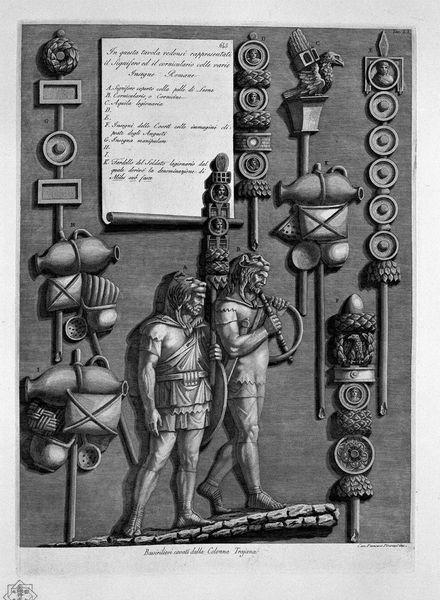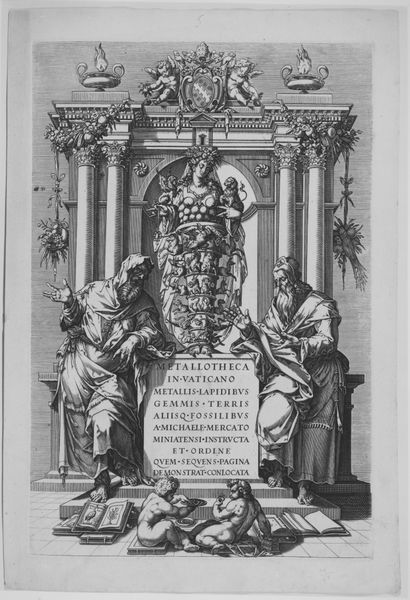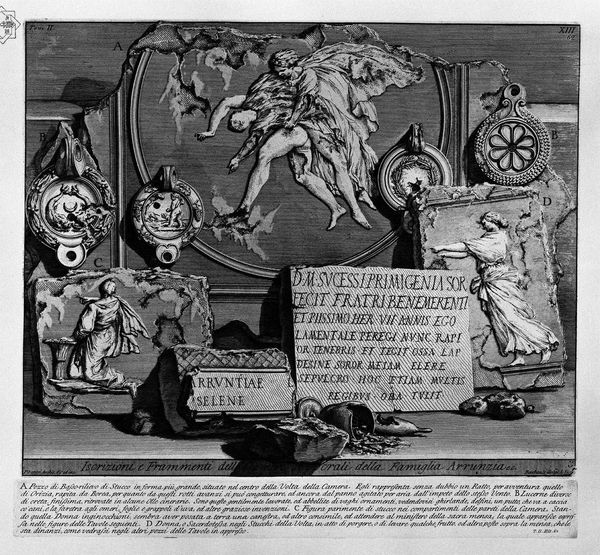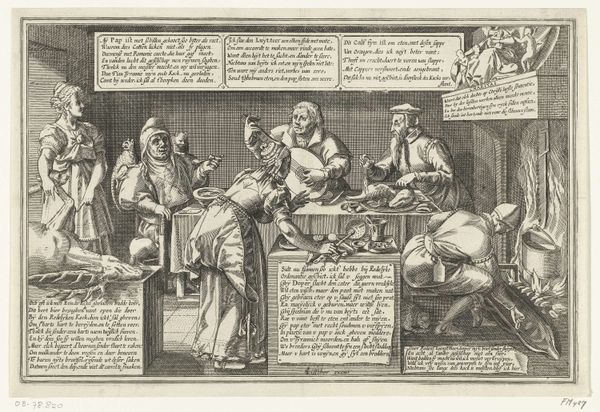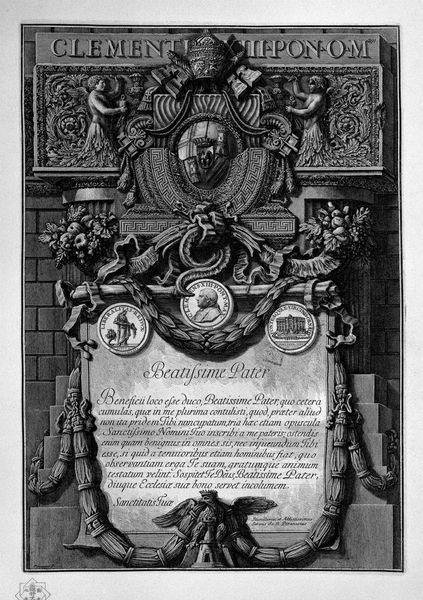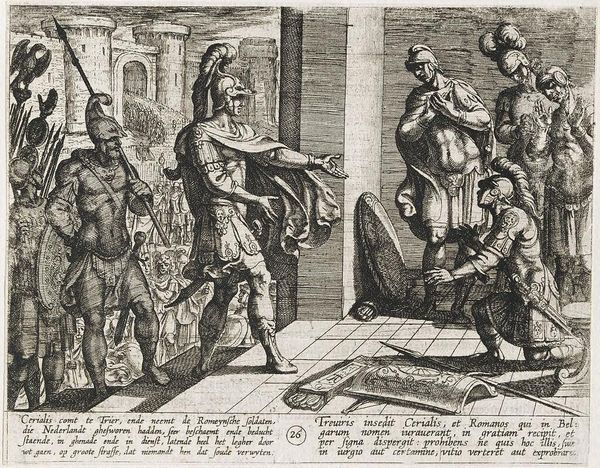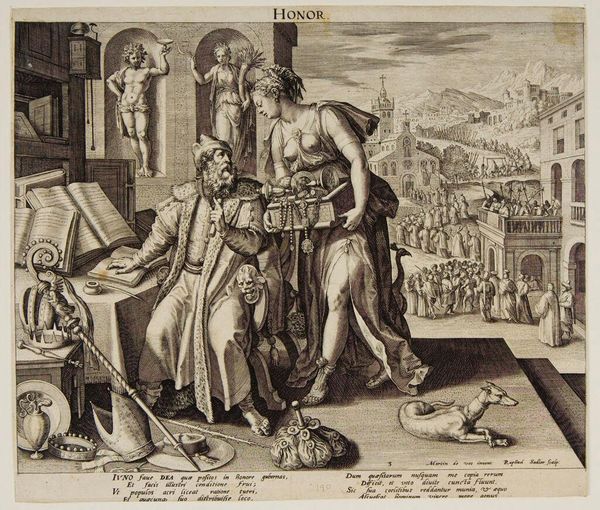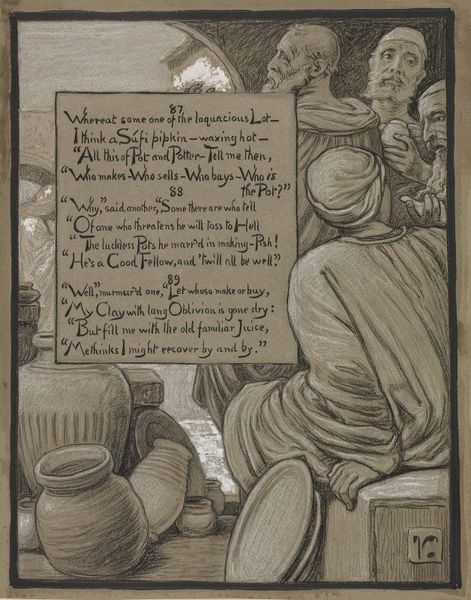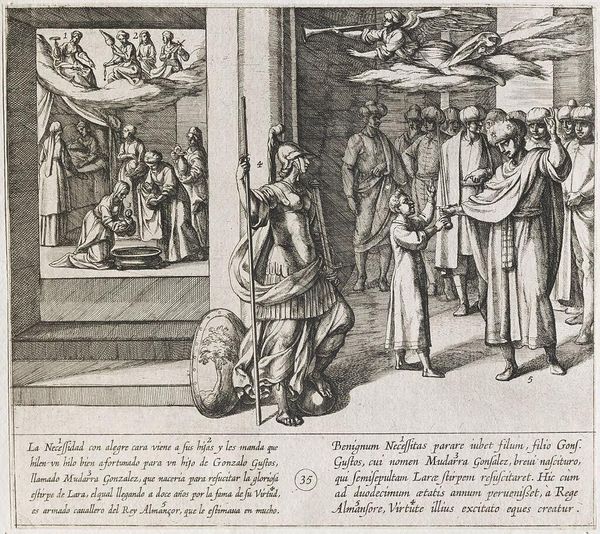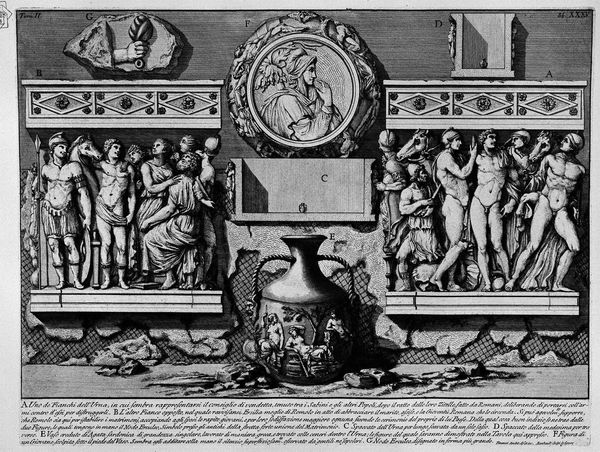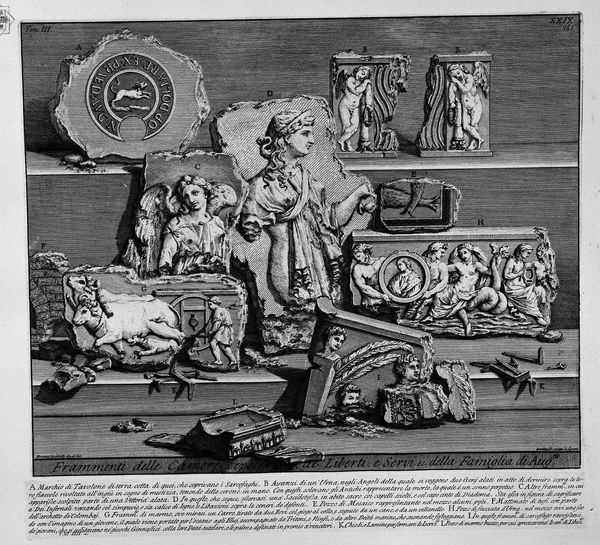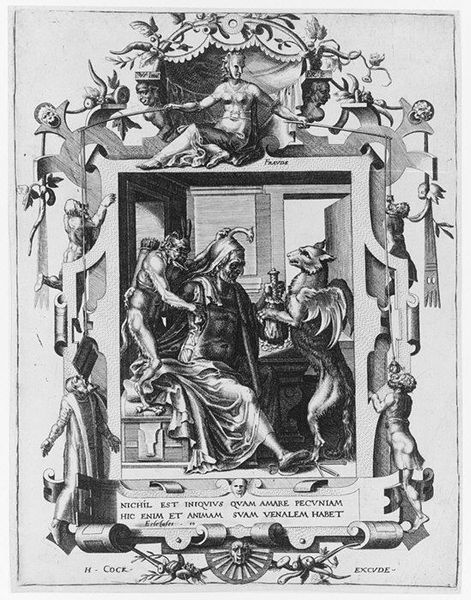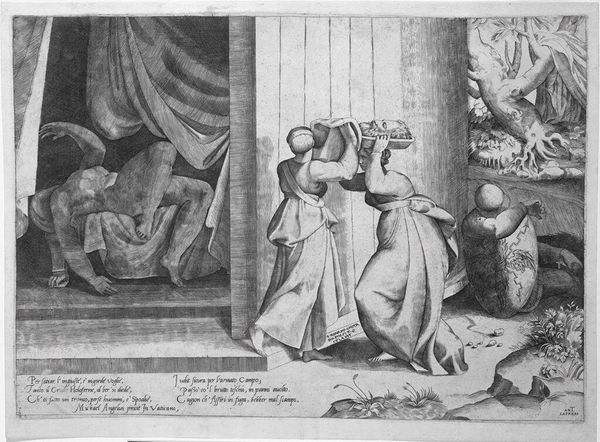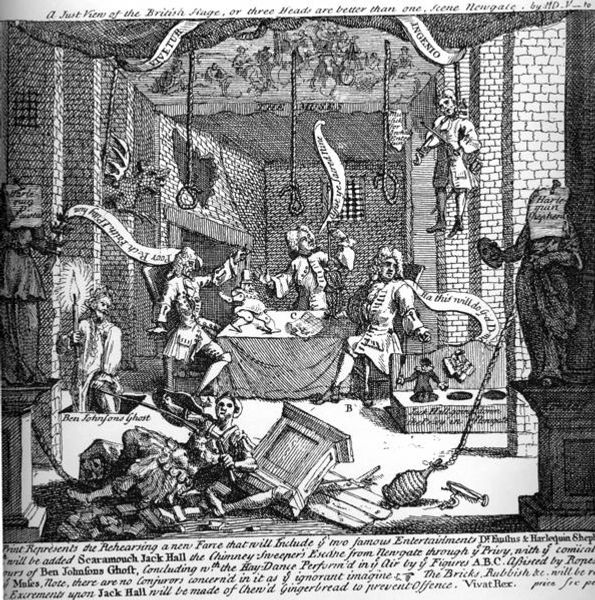
print, engraving
# print
#
figuration
#
romanesque
#
history-painting
#
engraving
Copyright: Public domain
Curator: This is an engraving titled "Eagles, signs, banner, and two legionnaires at the ford of a river," by Giovanni Battista Piranesi. The figures seem suspended on a flat plane, like individual studies brought together. What jumps out to you about this image? Editor: Well, I’m struck by how the artist combined the detailed renderings of these objects and figures with the flatness of the composition. I’m curious about what might have led Piranesi to create it in this way. Curator: Let’s consider the process. Piranesi was an engraver, primarily. What's compelling here is how printmaking, often viewed as reproductive labor, becomes a space to showcase material culture. Consider the banners, eagles, and legionnaires. How do they function as objects and representations of power? Editor: I see them as tools – tangible objects utilized for exercising authority in Rome. Each specific symbol has been clearly and diligently created, showcasing the tools' construction. Curator: Exactly! This is about more than just aesthetics; it’s about the construction and propagation of power through material things. Think about who these images were for. How does their accessibility shape our understanding of Roman history and identity? Editor: So the prints are almost like an early form of mass media, distributing symbols of Roman power? And his attention to the labor that goes into producing even *images* of these symbols underlines their cultural impact. Curator: Precisely! By focusing on the materials and their circulation, we are better equipped to discuss cultural contexts instead of pure, static representations. How has looking at the piece from the view of “things” informed our knowledge? Editor: Now, I realize Piranesi is really showcasing a range of power: material, symbolic, and even the power of representation itself, by putting it on display. I'll definitely consider prints as a product more deeply from now on.
Comments
No comments
Be the first to comment and join the conversation on the ultimate creative platform.
